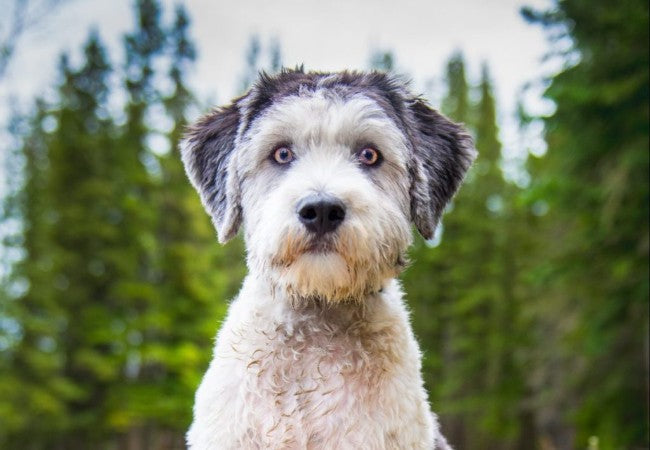Polish Lowland Sheepdog Guide 2025: Vet Approved History & Care ✅🐾

In this article
Polish Lowland Sheepdog Guide 2025: Vet Approved History & Care ✅🐾
By Dr. Duncan Houston BVSc
Introduction
The Polish Lowland Sheepdog, known as the PON (Polski Owczarek Nizinny), is a medium‑sized, shaggy herding breed from Poland. Intelligent, confident, and affectionate, PONs make vigilant watchdogs and sensitive companions for active families. 🐾 They thrive when given purpose—be it herding, dog sports, or mental challenges—and excel in both home and working environments.
Breed Origins & History 🏺
Descended from early pastoral breeds—likely Tibetan Terrier, Puli, and Central Asian dogs—PONs emerged in 16th‑century Poland as kennel shepherds and watchers. They spread to Scotland by 1514, influencing the Bearded Collie.
Nearly extinct after WWII, the breed was re‑established by Dr Danuta Hryniewicz and her foundation dog “Smok” in the 1950s. The AKC recognized PONs in 2001.
Physical Traits
- Size: 42–50 cm (17–20 in); 30–50 lb (14–23 kg)
- Coat: Thick double coat: dense undercoat + shaggy, harsh outercoat
- Colors: All solid, parti, and tricolor shades (black, grey, beige, brown, white)
- Distinct Features: Head covered in hair, often hiding eyes; rectangular body, natural bobbed or full tail
Temperament & Personality 🎭
PONs are self‑reliant, intelligent, and devoted to their family. They’re excellent with children and other pets when socialized but may try to herd people—gentle guidance helps. They’re alert and protective, calm indoors, but need strong leadership and consistent training.
They possess a “job ethic” and are happiest when mentally or physically challenged. Without it, they can become bored or vocal.
Exercise & Enrichment Needs ⚡
PONs need 1–2 hours daily of mixed exercise: brisk walks, herding tasks, fetch, nose work, dog sports like agility, rally, or obedience. They adapt well to apartments if thoroughly exercised, but they shine in active rural or suburban homes with secure yards.
Grooming & Coat Care ✂️
- Brushing: Daily to prevent mats, debris, and tangles
- Bathing: Monthly or as needed
- Ears: Check and clean weekly to avoid infection
- Teeth: Brush 2–3× per week; use dental chews
- Nails: Trim monthly
Coat care requires time and commitment—expect 1–2 hours per week grooming, and more during seasonal shedding.
Nutrition & Feeding 🍽️
PONs thrive on high‑quality, balanced diets—formulas for active or medium breeds. Feed measured meals twice daily, adjusting portions for age, exercise, and metabolism. Consider supplements like omega‑3s and glucosamine for skin, coat, and joint support.
Health & Genetic Screening 🧬
Lifespan: 12–14 years
Major concerns include:
- Hip dysplasia: Common; recommend OFA screenings
- Eye disorders: PRA, retinal dystrophy—annual ophthalmic exams
- Neuronal ceroid-lipofuscinosis (NCL): Rare but serious; genetic risk
- Hypothyroidism: Monitor via yearly blood work
Use responsible breeders who offer hip, eye, and genetic clearances and book annual wellness exams.
Training & Behavioral Support 🧠
PONs respond best to reward‑based training—treats, praise, clickers. Training should begin early and include obedience, handling, herding instincts, and people/socialization.
Consistency is key—stubbornness may emerge without structure. Crate training fosters security. For advanced behavior and coordination challenges,
Living Environment & Compatibility 🏡
PONs thrive in homes with yards or farms, active owners, and early socialization. They're good with children and pets, but potential herding behavior requires supervision.
They can adapt to urban life if energy and grooming demands are met. Noise sensitivity and tall grassy public spaces call for predictable routines.
Adventure & Travel 🧳
PONs enjoy travel and varied experiences. They do well in cars with harnesses and love hiking, camping, and farm visits. Secure containment is essential—they can roam when stimulated by movement or wildlife.
Dr Houston’s PON Wellness Checklist ✅
- 📅 Annual vet exams—including hips, eyes, thyroid
- 🍽️ Measured meals twice daily with joint/coat supplements
- 🏃♂️ 1–2 hours daily exercise + brain games
- 🛁 Daily coat maintenance, scheduled baths
- 📱 Ask A Vet for tailored diet, skin, thyroid, or behavioral support
Conclusion 🌟
The Polish Lowland Sheepdog is a smart, loyal companion for owners who embrace active lifestyles, mental stimulation, and grooming dedication. With proper care and training, the PON brings affectionate energy, protective instincts, and joyful companionship into every home.
Need expert help caring for your PON? Visit AskAVet.com or download the Ask A Vet app for 24/7 personalized support and training tools. 🐾






